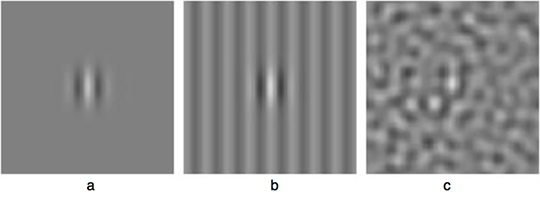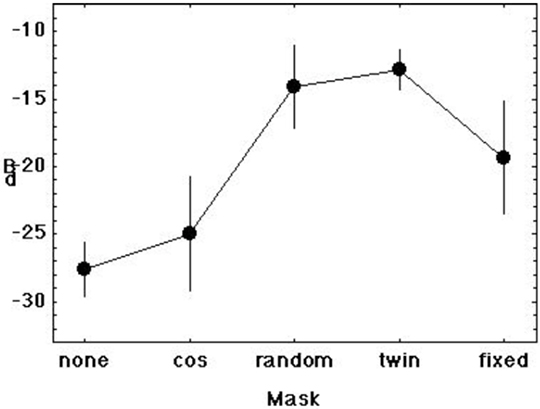|
|
 |

|
 |
 |
| Entropy Masking in Visual Displays (Andrew B. Watson) |
 |
As part of NASA’s Human Exploration and Development of Space Enterprise and Aeronautics Enterprise, the Vision Group at Ames Research Center was involved in research on the human factors of visual displays and visual communication systems. A primary thrust of this effort was to develop computational models of human visual performance that could be used in engineering design of imaging and display technology. A first goal of human vision models is to predict visibility of arbitrary targets, especially against noisy or cluttered backgrounds that are typical of real imaging environments. This problem is central to applications such as image compression, flat panel display design, sensor fusion, and design of helmet-mounted and other head-up displays. To meet this challenge, we completed a program of experiments on visual masking: the interference of the background on the detection of visual targets.
As a result of this research, we identified a new category of visual masking, which we call entropy masking. Previous research over many decades had identified two principal varieties of visual masking: contrast masking and noise masking. The former refers to a reduction in visual sensitivity due to a passive adaptive process. In effect, the gain of visual neurons is turned down when there is a large amount of pattern stimulation, in order to prevent saturation of the limited dynamic range of the neural response. Noise masking refers to an inevitable reduction in visibility when a random component is added to the visual stimulus. Entropy masking depends on neither gain control or randomness. Instead, it is due to the observers lack of knowledge about the obscuring background, and it may be ameliorated by increasing that knowledge through learning.
The following experiments illustrate the essentials of entropy masking. The observer attempted to detect the Gabor function target pictured in Fig. 1a. The target was obscured by the addition of one of the masks shown in Fig. 1b-c. These are a cosine luminance grating (Fig. 1b), with the same spatial frequency as the target, and a sample of one-octave, band-pass noise (Fig. 1c), with a center spatial frequency equal to that of the Gabor function target. The two masks were equated in contrast energy so that they would have equal effects on the contrast gain-control system, that is, equivalent contrast masking.

Fig. 1. Visual target (a) and two masks: cosine grating (b) and bandpass noise (c). Each mask is shown with the target added.
On each trial, the observer received two brief presentations on a crt monitor. One contained a background only, the other contained a background plus the target. The observer tried to identify the presentation containing the target. The contrast of the target was varied from trial to trial to estimate the contrast required for 82% correct performance. To manipulate the degree of randomness, the bandpass mask was either new on each presentation (random condition), the same for both presentations of a trial but new for each trial (twin condition), or always the same (fixed condition).

Fig. 2. Target thresholds as a function of mask condition.
The results are shown in Fig. 2. The cosine mask elevates threshold by a small amount (about 3 decibels), but the random condition produces much more masking. However, the twin condition shows that this masking is not due to randomness, since the masks are identical in the two presentations of each trail. The fixed condition shows that with learning (640, 2176 and 3584 trials were collected from the three observers), a significant reduction in masking is obtained. Indeed, at the end of learning, the threshold is similar to that for the cosine condition. We conclude that the masking effect of the bandpass noise is due to the observers ignorance about its structure (its entropy).
We believe that entropy masking is the dominant form of masking in many applied situations. It was important to verify its existence and properties to enable optimal design of visual communications systems. This work moved us closer to the goal of a set of general human factors engineering tools that will enhance the safety and effectiveness of NASA’s Space and Aeronautics missions.
|
|
|
|
|